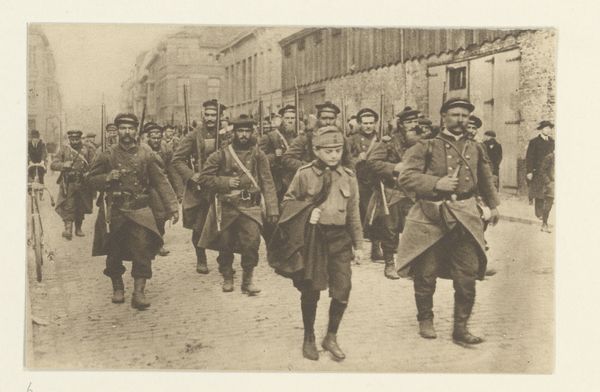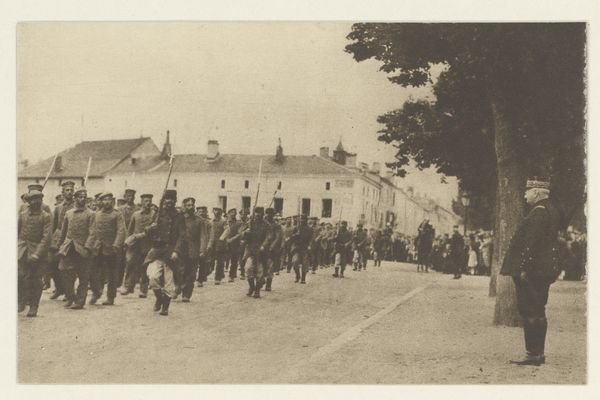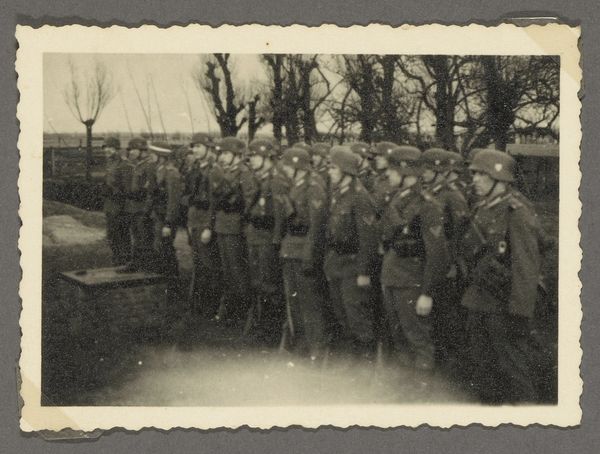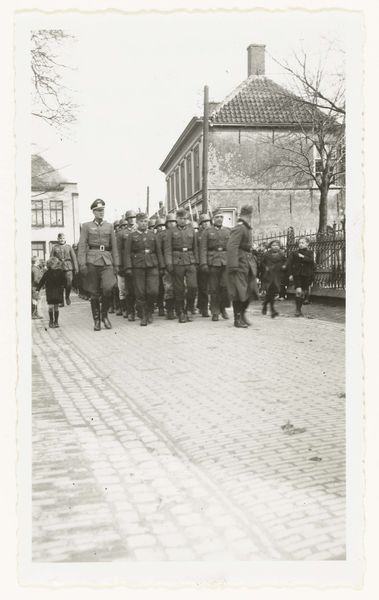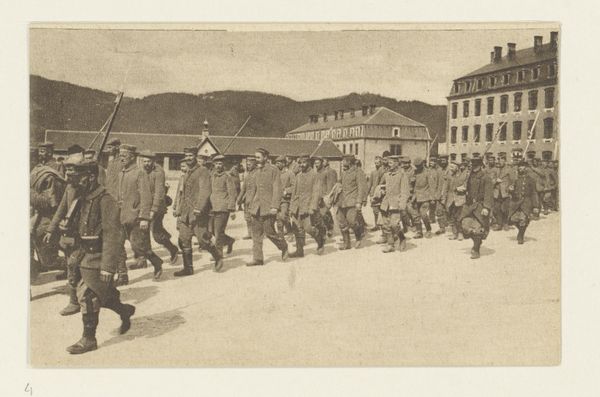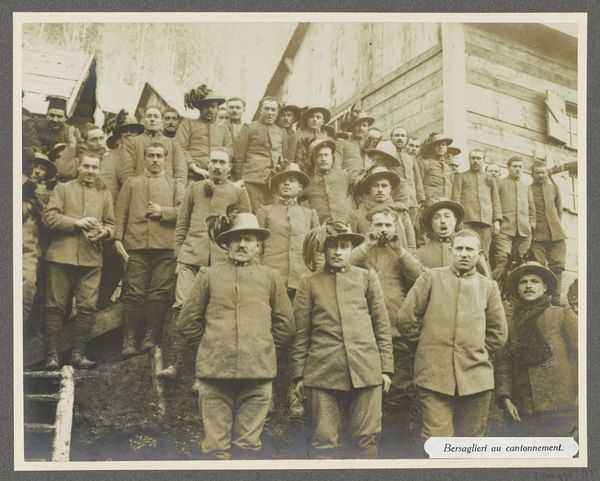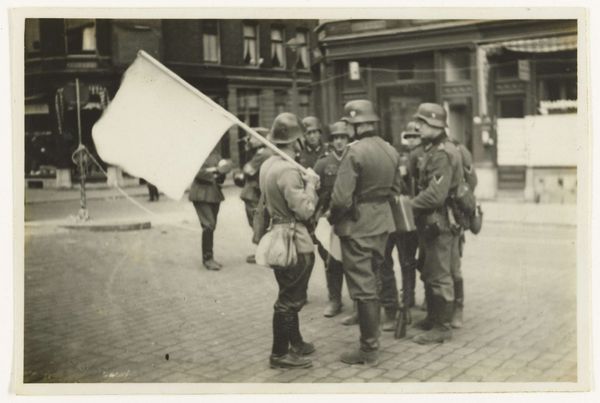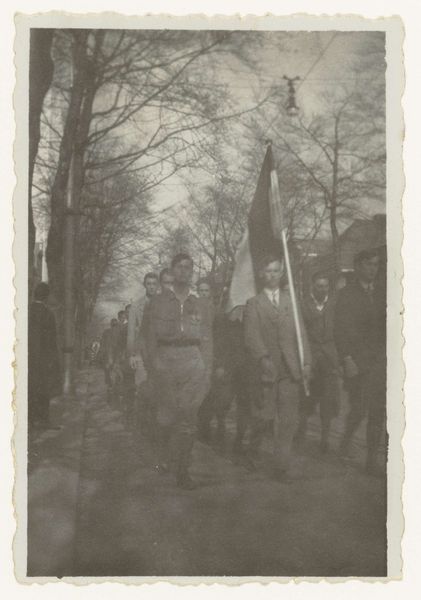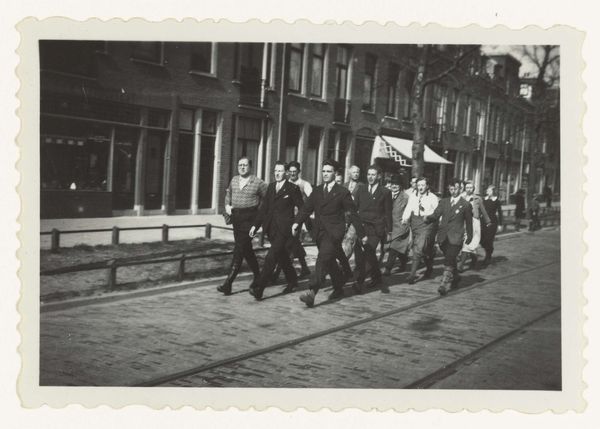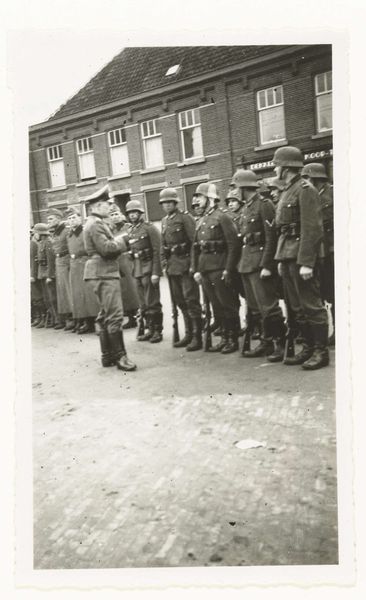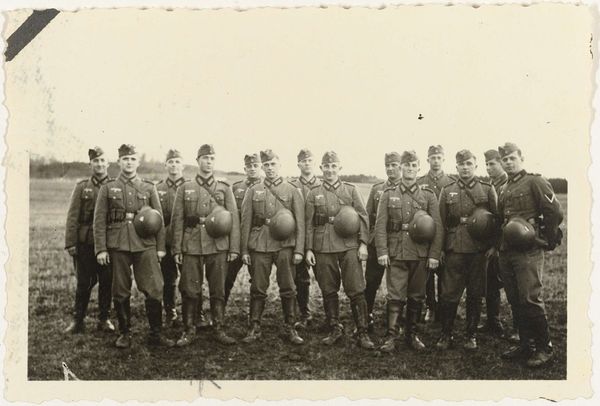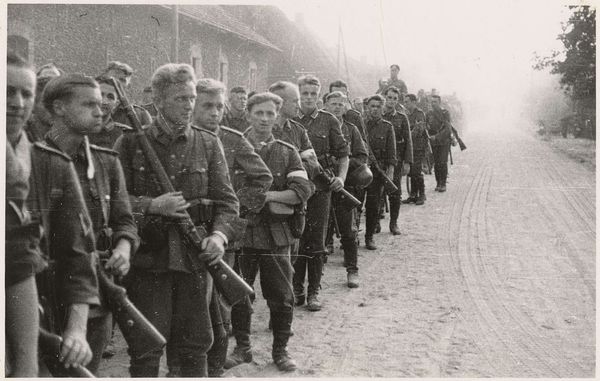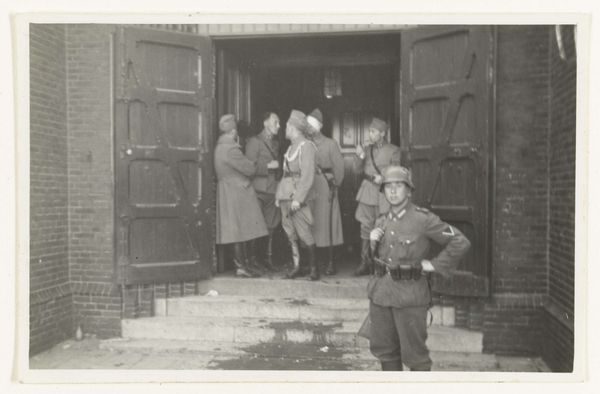
Hoe de Duitschers hunne intrede te Parijs deden, geëscorteerd door Fransche cuirassiers en infanteristen, na de Fransche overwinning in Champagne (Februari-Maart 1915) 1914 - 1915
0:00
0:00
print, photography, gelatin-silver-print
# print
#
archive photography
#
photography
#
historical photography
#
gelatin-silver-print
#
genre-painting
Dimensions: height 90 mm, width 140 mm
Copyright: Rijks Museum: Open Domain
Editor: This photograph, "Hoe de Duitschers hunne intrede te Parijs deden...", which translates to "How the Germans made their entry into Paris", created around 1914-1915, is haunting. The grainy texture and the long line of soldiers… it evokes a sense of grim inevitability. What do you see in this piece, that I might be missing? Curator: Look closely at the faces, Editor. What symbols do you observe, and what feelings do they bring to the surface? Notice the rigid, almost mechanized way they march, and consider how this symbolizes a kind of collective will, or perhaps, a loss of individual agency. It appears to document the "facts" of war, yet, does it instead highlight an exercise in group identity and perceived glory? Editor: So, the way they are positioned, it's about more than just documentation? Curator: Indeed. The presence of French soldiers escorting the Germans raises uncomfortable questions. Whose narrative is truly being presented here? What purpose does the presence of the French soldiers in this representation serve? The photographer asks us to delve into memory and propaganda. Editor: That's a point well taken; I hadn't considered how complex a visual representation can be, especially given such sensitive historical subjects! Curator: And don't forget how photographic techniques contribute! The silver gelatin print makes me consider preservation, and also manipulation. As we gaze into the sepia tones, think about shared memory, and manufactured representation; a photo tells not *the* truth but *a* truth. Editor: Thank you for offering an opportunity to consider not just what is pictured, but *how* and *why* it might have been presented in such a way. Curator: Indeed, we learn something each time we explore; historical record must be examined with cultural awareness, lest it overwhelm us.
Comments
No comments
Be the first to comment and join the conversation on the ultimate creative platform.
